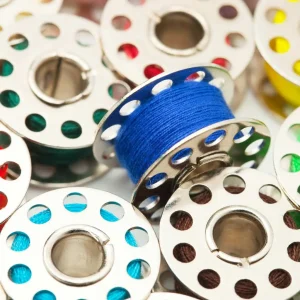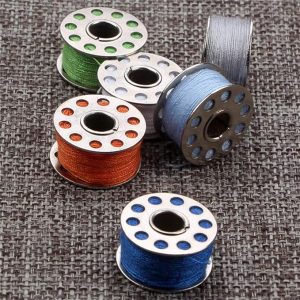In a cozy corner of your grandmother’s attic, amidst the treasures of her vintage sewing kit, you might discover a collection of small metallic objects. These are thread bobbins, essential components of a sewing machine, once as common in homes as smartphones are today.
Picture the year 1970. These bobbins symbolize more than just sewing tools; they represent self-sufficiency and creativity. Each one, with its tiny holes and hollow core, was meticulously wound with thread, ready to power the sewing machine, the heart of domestic crafting.

Sewing was not just a hobby but a vital skill passed down through generations. It was the art of transforming flat fabric into three-dimensional creations, whether clothing or home décor. Before the era of fast fashion and mass production, these bobbins helped create garments that would be cherished for years, sometimes even handed down through the family.
These once-essential tools, now often overlooked, were central to many household rituals. They spun the threads that made wedding dresses, hemmed school uniforms, and patched well-worn jeans. Every bobbin held a story, a moment from someone’s life. You could almost hear the sewing machine’s rhythmic hum, the background radio, the focused murmurs, and the occasional sighs of frustration or triumph.

Finding these bobbins in Granny’s sewing kit is like discovering a time capsule. It’s a tangible link to a past where handmade wasn’t a luxury but a necessity. It reminds us of the care in every stitch, the pride in creating something from scratch, and the satisfaction of mending and making do.
As we move towards sustainability and personal touch, these bobbins are more than relics; they’re inspirations. They remind us of the value of patience, the beauty of craftsmanship, and the importance of preserving skills that help us lead more mindful lives. Like the thread wound around them, their story is continuous, connecting the past to the future.


